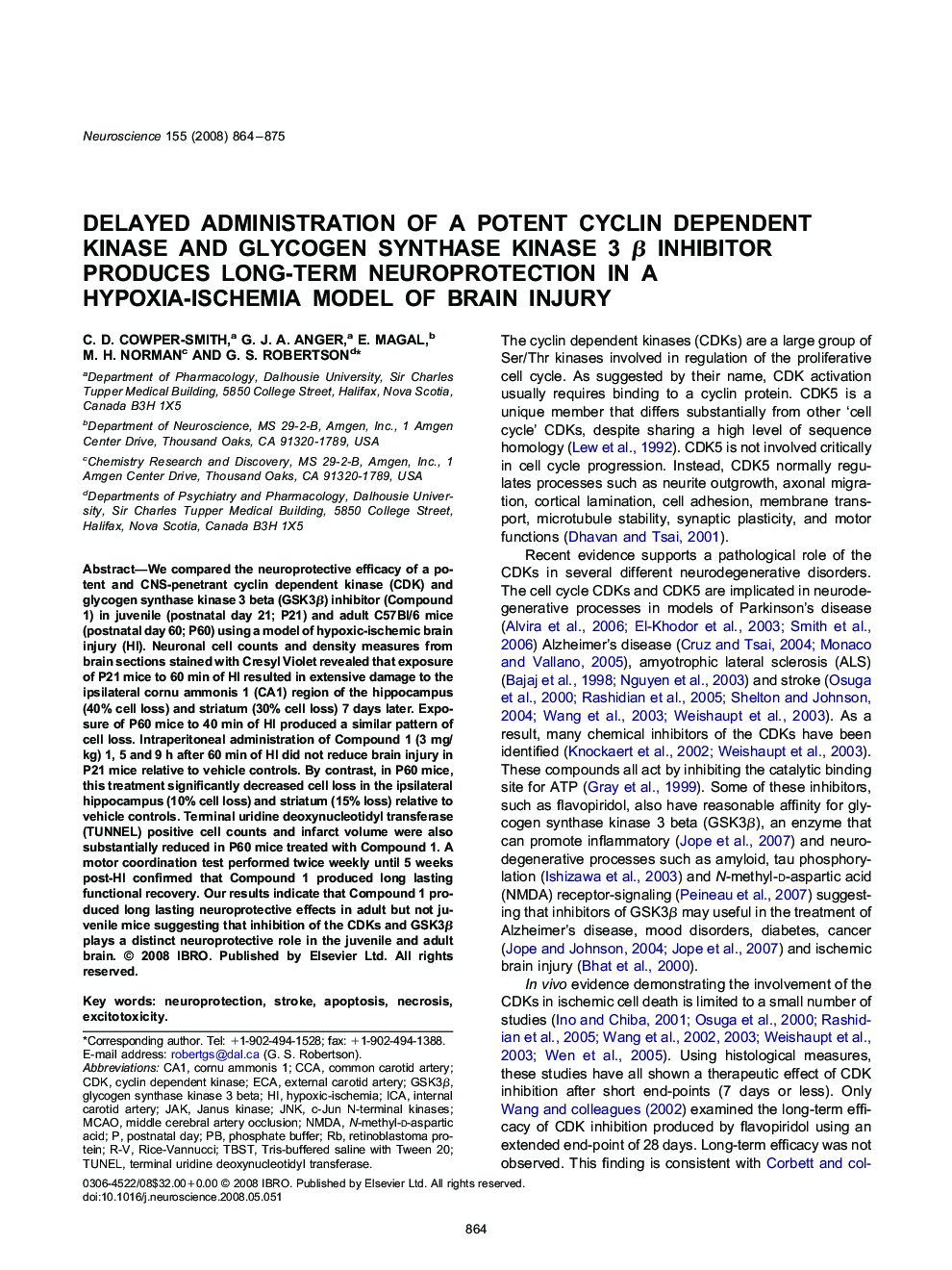| Article ID | Journal | Published Year | Pages | File Type |
|---|---|---|---|---|
| 4340737 | Neuroscience | 2008 | 12 Pages |
We compared the neuroprotective efficacy of a potent and CNS-penetrant cyclin dependent kinase (CDK) and glycogen synthase kinase 3 beta (GSK3β) inhibitor (Compound 1) in juvenile (postnatal day 21; P21) and adult C57Bl/6 mice (postnatal day 60; P60) using a model of hypoxic-ischemic brain injury (HI). Neuronal cell counts and density measures from brain sections stained with Cresyl Violet revealed that exposure of P21 mice to 60 min of HI resulted in extensive damage to the ipsilateral cornu ammonis 1 (CA1) region of the hippocampus (40% cell loss) and striatum (30% cell loss) 7 days later. Exposure of P60 mice to 40 min of HI produced a similar pattern of cell loss. Intraperitoneal administration of Compound 1 (3 mg/kg) 1, 5 and 9 h after 60 min of HI did not reduce brain injury in P21 mice relative to vehicle controls. By contrast, in P60 mice, this treatment significantly decreased cell loss in the ipsilateral hippocampus (10% cell loss) and striatum (15% loss) relative to vehicle controls. Terminal uridine deoxynucleotidyl transferase (TUNNEL) positive cell counts and infarct volume were also substantially reduced in P60 mice treated with Compound 1. A motor coordination test performed twice weekly until 5 weeks post-HI confirmed that Compound 1 produced long lasting functional recovery. Our results indicate that Compound 1 produced long lasting neuroprotective effects in adult but not juvenile mice suggesting that inhibition of the CDKs and GSK3β plays a distinct neuroprotective role in the juvenile and adult brain.
